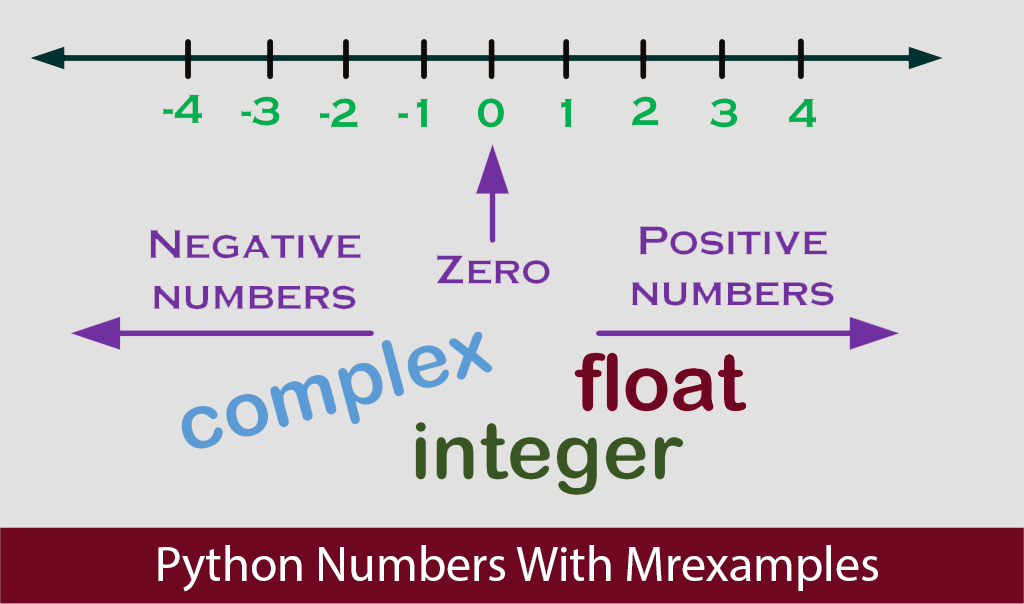Python Numbers – What Are They?
This chapter discusses Python numbers with examples with the hope that it will meet the learning objectives.
Python Numbers
Numeric data types in Python include integers, floating-point numbers, and complex numbers.
The syntax will be as follows:
- int
- float
- complex

We’ll discuss int, float, and complex numbers in this lesson.
Setting a value to variables of numeric types defines them as follows:
a = 5 #int b = 5.4 # float c = 5j # complex
Python’s type() function can be applied to check the type of any object:
Example:
Python Int
A Python int (integer) is a whole number, positive or negative, without decimals, of unlimited length.
Example:
An example would be to assign the integer 66 to the variable num as follows:
>>> num = 66 A literal integer Python numbers is one that is literally written into code using the number 66 in the example above.
The comma character can’t be utilize to group digits in an integer literal in Python, but the underscore (_) can. 3 million can be represented as an integer literal in either of the following ways:
Example:
Float
Floats, or floating point numbers, contain one or more decimal places and can be positive or negative.
Example:
The floating point number can also be a scientific number with an “e” to represent a power of 10.
Example:
Complex
In Python numbers, complex numbers are written with a letter “j” as the imaginary part of the number.
Example:
Type Conversion
A number of methods are available to convert between different types of data, such as int(), float() and complex(), as follows:
Example:
Python String as Int
Using int(), you can convert a Python string containing an integer to a number.
The following code converts the string “66” to the integer 66:
Example:
The integer value “66” was produced from a string, so int(“66”) isn’t an integer literal.
Python Random Number
In Python Numbers, there is no random() function that can be applied to generate a random number. However, there is a built-in module called random in Python that can be utilized to generate a random number:
You can render a random number between 1 to 9 by importing the random module:
Example
This Random Module Reference will help you to gain a deeper understanding of the Random module.
Python Numbers Importance
Here are some reasons highlighting the importance of numbers in Python:
- Python provides robust support for numerical computations and mathematical operations. Numbers allow you to perform arithmetic calculations such as addition, subtraction, multiplication, division, and exponentiation. These operations are essential for a wide range of applications, including scientific computing, data analysis, and financial modeling.
- Python’s numerical capabilities, along with libraries like NumPy and Pandas, make it a popular choice for data analysis and statistics. Numbers enable you to manipulate and analyze numerical data, calculate descriptive statistics, perform statistical tests, and visualize data through plots and graphs.
- Python is widely used in scientific and engineering domains for simulations, modeling, and solving complex equations. Numbers are vital for performing calculations in physics, chemistry, engineering, and other scientific disciplines. Python’s extensive library ecosystem, including SciPy, SymPy, and Matplotlib, provides specialized tools for these calculations.
- Python offers built-in functions and libraries for generating random numbers. Random numbers are useful in various applications such as simulations, games, cryptography, and statistical sampling. Python’s random number generation capabilities allow you to generate random values within specified ranges or distributions.
- Numbers are often used in conditional statements and control flow constructs such as if-else statements and loops. Comparisons between numbers using operators like <, >, ==, etc., help in making decisions and controlling the program flow based on specific conditions.
